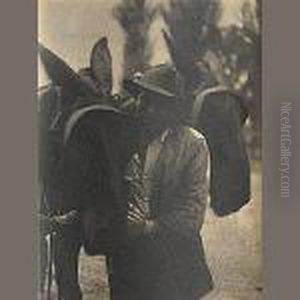Doris Ulmann Paintings
Doris Ulmann was an American photographer known for her portraits of people living in rural parts of the United States, particularly the Appalachian Mountains, as well as her work documenting the cultural figures of her time. Born on May 29, 1882, in New York City to a wealthy family, she developed an interest in the arts at a young age. Ulmann was educated at the Ethical Culture School, where she was influenced by the school's emphasis on social awareness. She later attended the Clarence H. White School of Photography, which was known for promoting pictorialism, an approach that emphasized the artistic aspects of photography.
Ulmann's early work reflects the pictorialist style, with soft-focus images that often resemble paintings. However, she is best known for her later documentary photographs. In these works, she captured the lives and expressions of her subjects with a respectful and compassionate lens, often using a large-format camera to produce detailed prints. Her subjects ranged from the rural folk of the South, including African Americans, Appalachian farmers, and craftsmen, to notable intellectuals, artists, and writers of her time, such as John Dewey, William Butler Yeats, and Max Eastman.
In the early 1920s, her work began to shift more towards the documentary style as she became increasingly interested in portraying the diversity of American life. This period was marked by extensive travels through the South, where she worked on a series of photographs that would later be published in the book 'Roll, Jordan, Roll'. Ulmann's approach was characterized by a deep respect for her subjects, and she often spent significant time getting to know the people she photographed.
Doris Ulmann's health began to decline in the early 1930s, and she passed away on August 28, 1934, in New York City. Despite her relatively short career, Ulmann left behind a legacy that has been influential in the field of documentary photography. Her work is recognized for its artistic integrity and for providing a dignified and poignant record of the lives of her subjects. Her photographs are held by major institutions and continue to be the subject of exhibitions and publications, ensuring her contribution to American photography is remembered and appreciated.
